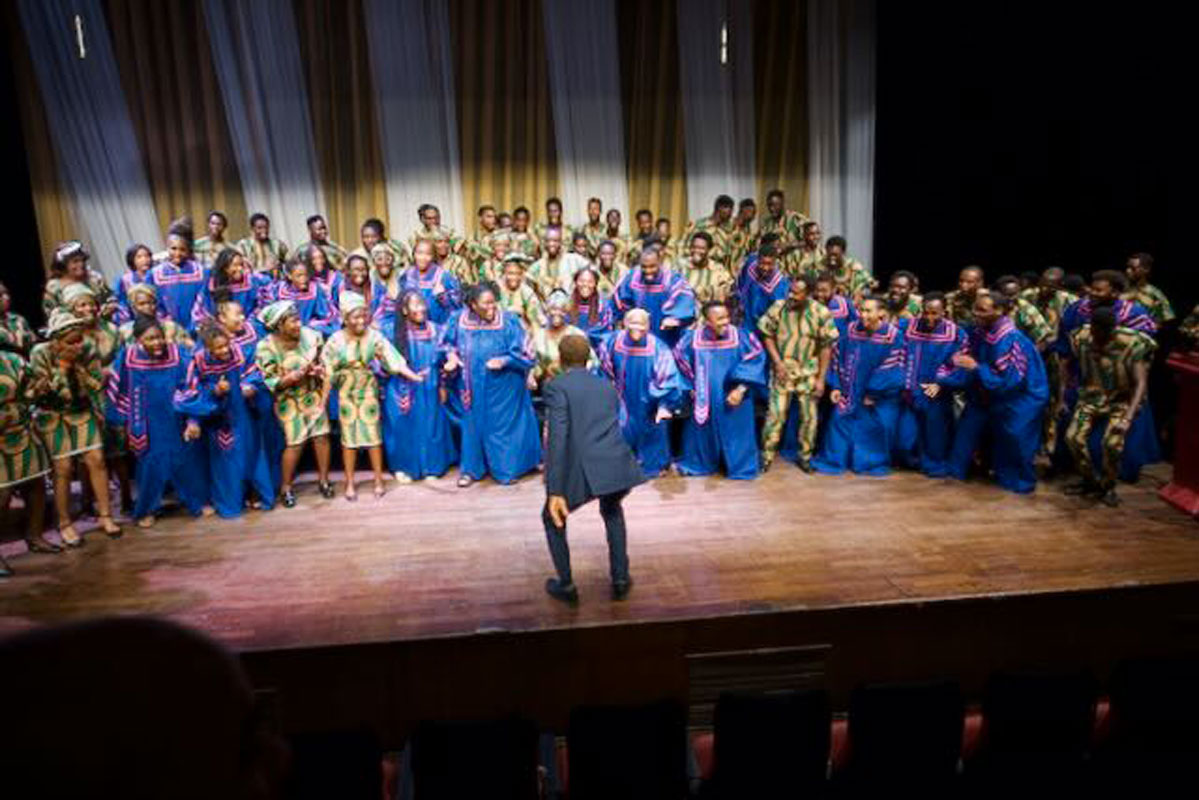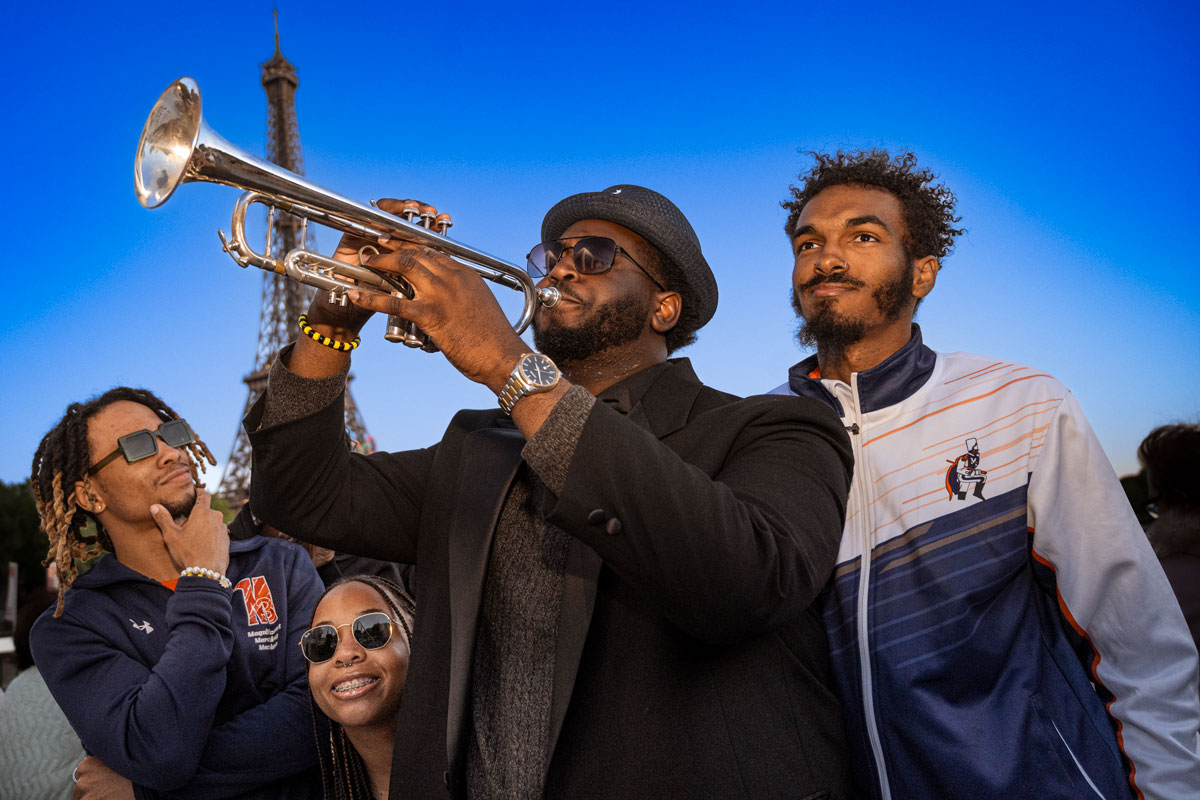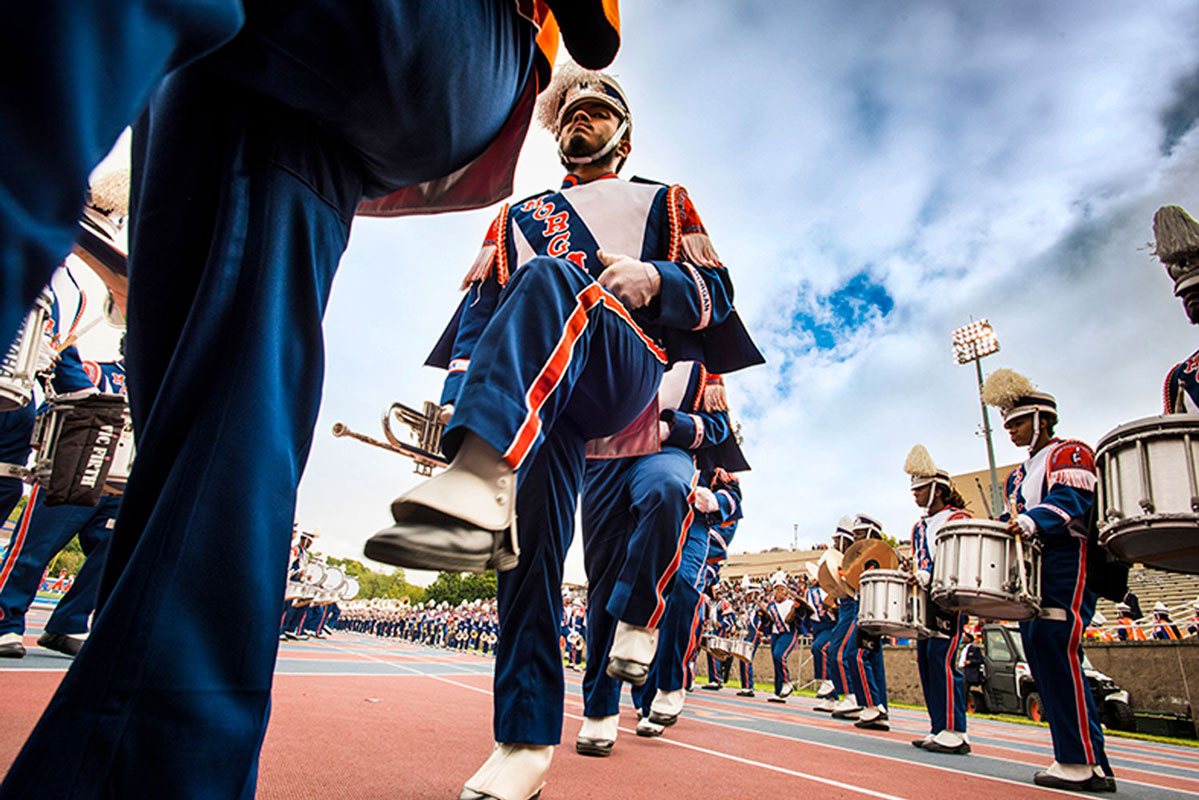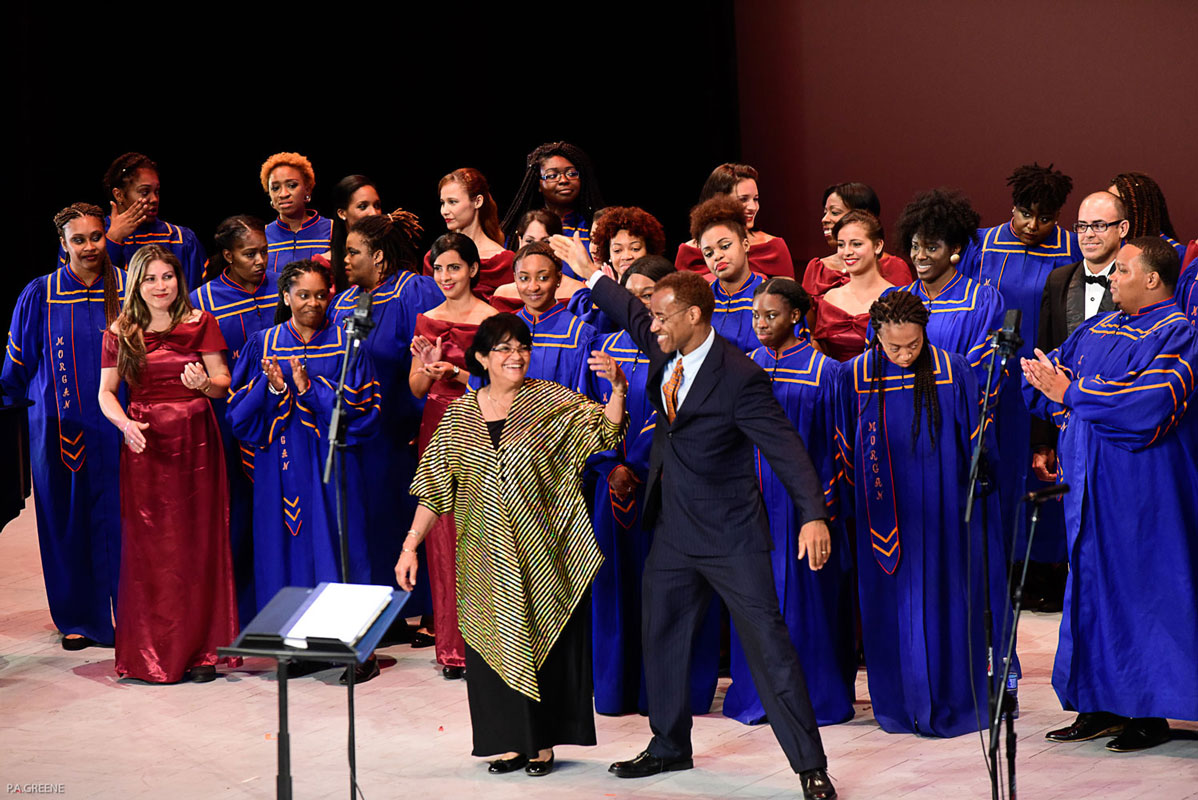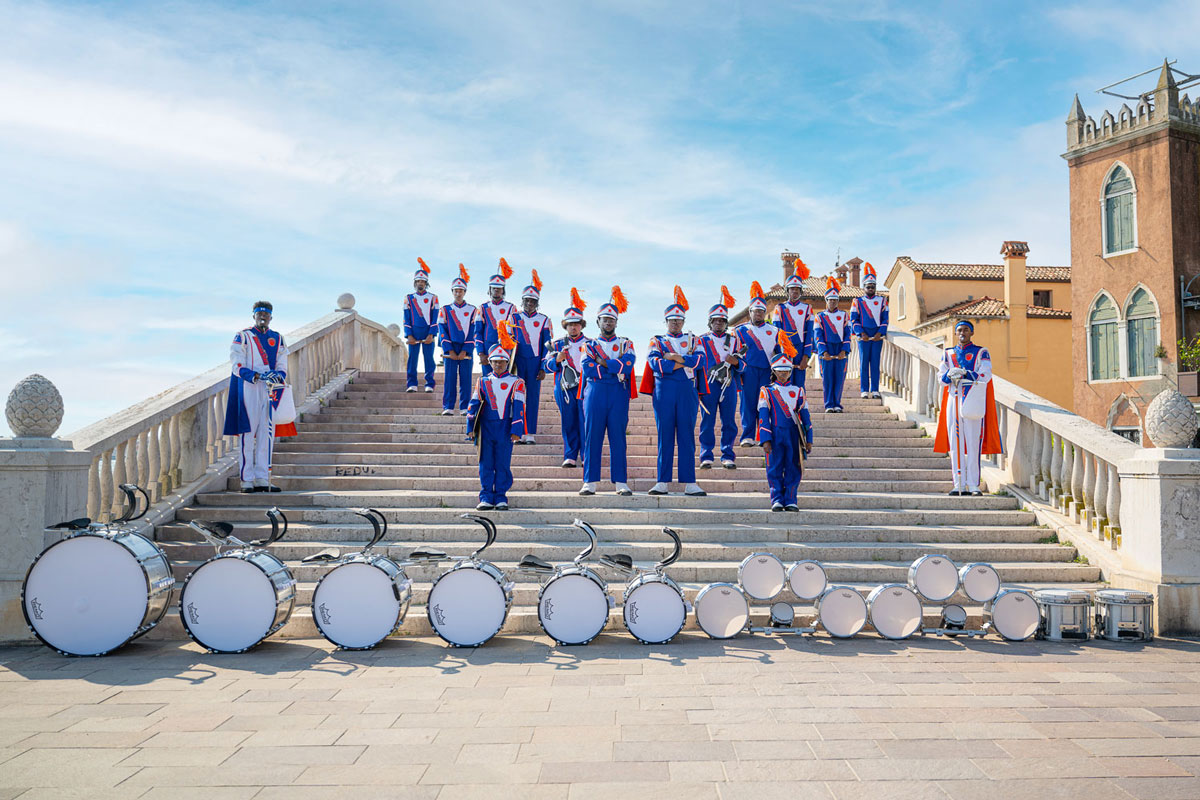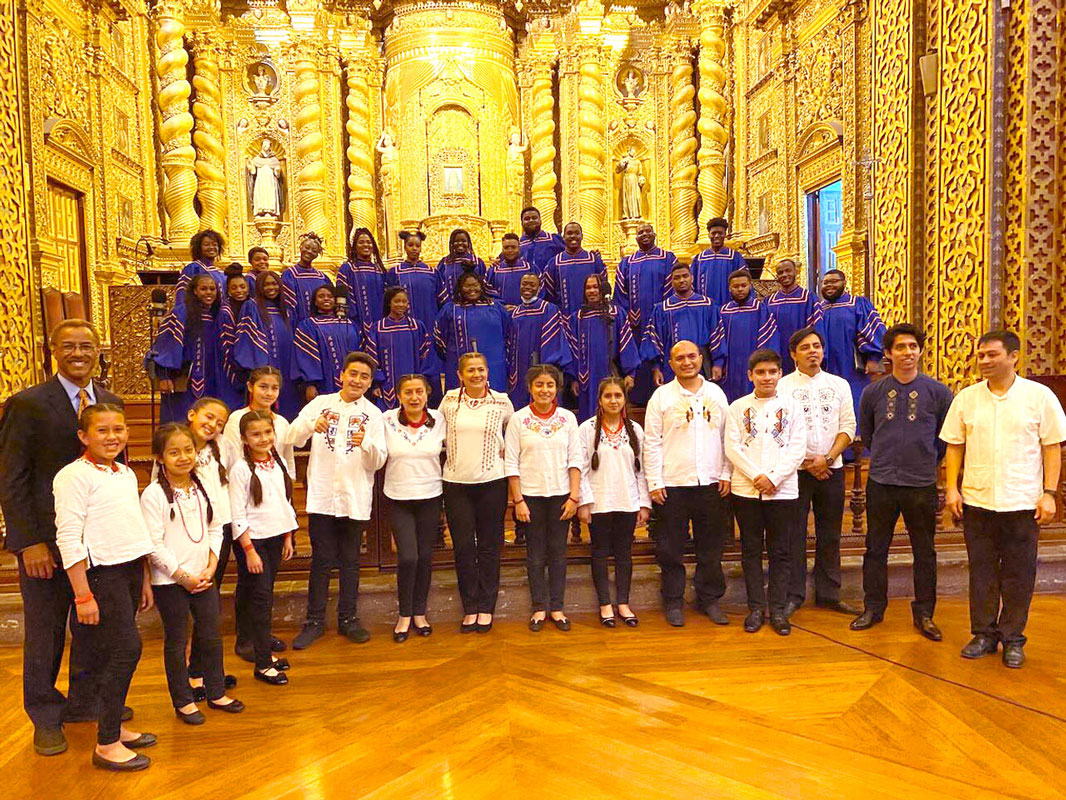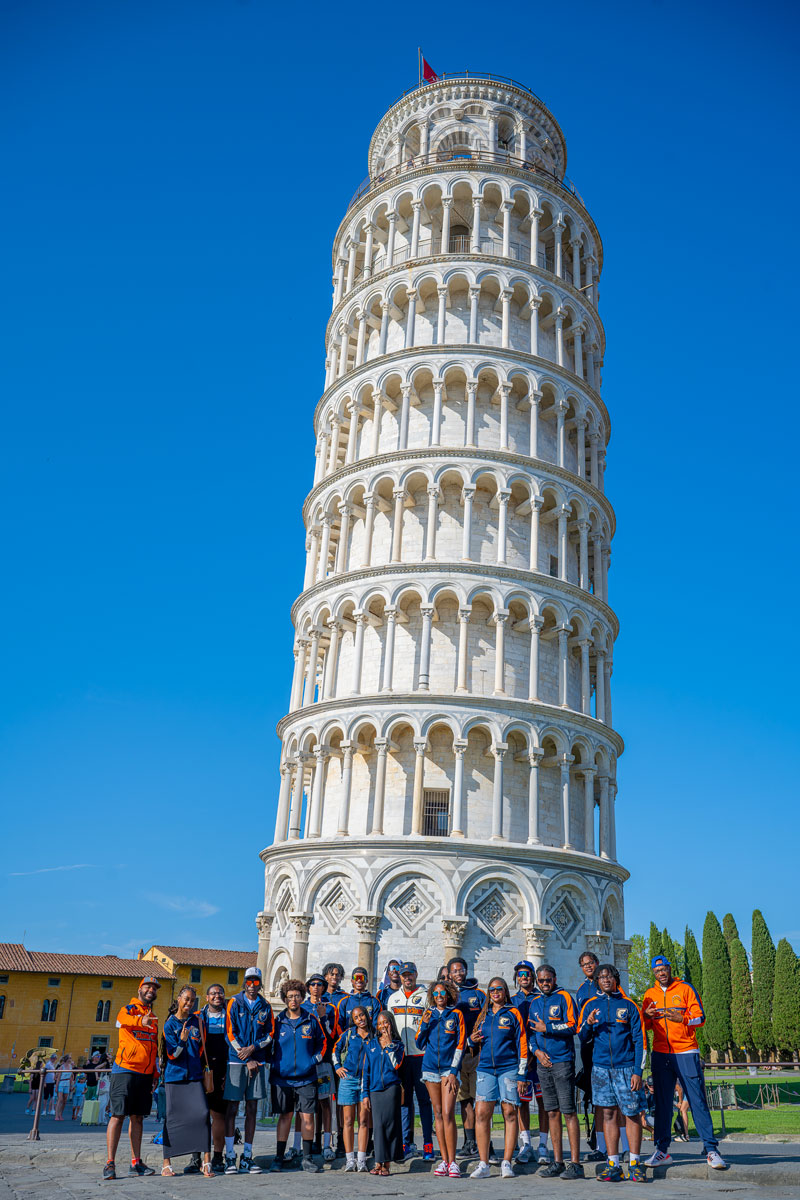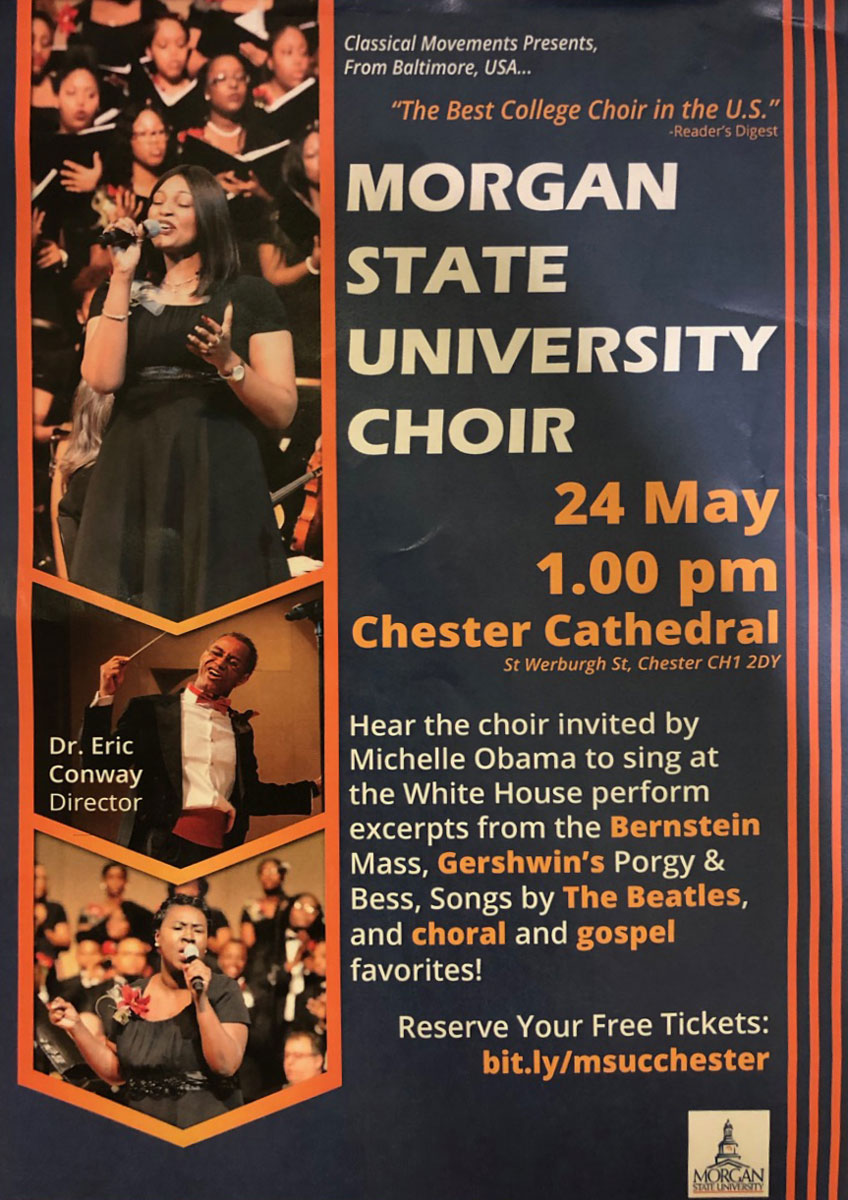By: Christina Royster, Class of ’93
The Marching Band and University Choir Showcase the ‘National Treasure’ for the World
An Overture in Venice
On a bright June morning in 2025, snare-drum rim shots echoed across stone in a centuries-old public garden along the Venetian waterfront. The commotion wasn’t a local festa; it was Morgan State University’s Magnificent Marching Machine marching band activating “ReCall & Response,” a sound-sculpture pavilion shaped like an African talking drum and designed by Professor Coleman A. Jordan of Morgan’s School of Architecture and Planning.
“It’s a flash mob but with spoken word, in Venice,” Morgan Bands Director Jorim E. Reid Sr., D.M.A., said before the trip, explaining how musicians and poets would animate the structure.
Horns rose, dancers swept through the arches, and one corner of the Venice Architecture Biennale pulsed with Baltimore swagger — proof that Morgan’s artists travel in perfect pitch.
Thousands of miles east, just weeks earlier, the Morgan State University Choir had filled Singapore’s Voices of Singapore Capital Studios Recital Hall with spirituals, African American art songs and gospel. One local guide, a self-described atheist, told Choir Director she “felt something on the inside I’ve never felt before.” Dr. Conway calls that a reaction to the choir’s “sincerity of sound.”
Two ensembles, two conductors, one mission: grow the future, and lead the world.
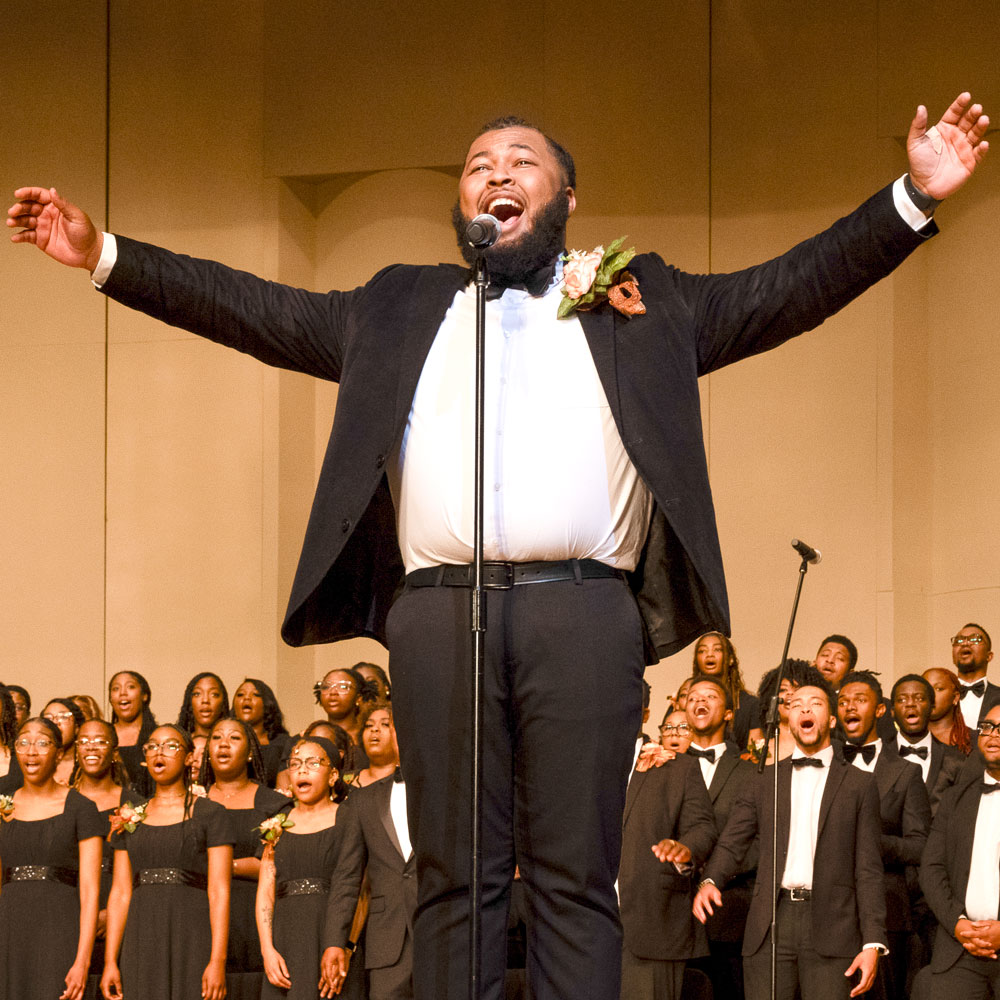
The choir gave me a real-world preview of a professional career featuring world-class travel — free.
Jeremiah Washington graduated with a bachelor’s degree in Music Fine Arts with Morgan’s Class of 2024. A Denyce Graves Young Artist honoree, he was recently accepted into the Shenandoah Conservatory’s graduate school.
The Magnificent Marching Machine
Dr. Reid took the baton from longtime Morgan Bands Director Melvin N. Miles Jr. in 2022, after winning Honda Battle of the Bands titles at North Carolina Central University. Reid aligns his program with President David K. Wilson’s quest for preeminence, through his leadership of the band, which is simultaneously Morgan’s largest student organization and a credit-bearing course.
“It’s not about being in the band; it’s about what the band puts in you,” Reid says. “Engineering majors learn show production, physical therapy majors study biomechanics, and everyone learns character.”
That character has landed on impressive stages: the 80th anniversary D-Day commemorations in Normandy, France, in 2024; two NFL halftime shows; and an invitation to the 2026 Tournament of Roses Parade, to name a few. Dr. Wilson called the parade slot “an historic opportunity to showcase our students’ exceptional talent and spirit on an international stage.”
Innovation in 4/4 time: this past summer, portions of the band traveled to Venice, Italy, fusing African polyrhythms with spoken-word artistry in what Reid called “a living blueprint of historically Black colleges and universities culture.” Funding is tougher today, when common grant keywords trigger political review, but Reid has secured recording grants and is pursuing additional funding — publicly and privately sourced — all in the interest of continuous quality improvement in education and performance.
“Every institution has its culture,” he says. “Excellence is nonnegotiable.”
The Morgan State University Choir
When Conway succeeded the late Nathan Carter, D.M.A., becoming Morgan’s choir director and chair of the University’s Department of Fine and Performing Arts, in 2004, well-wishers wondered how anyone could fill Dr. Carter’s musical shoes. However, within months, the choir sang in the U.S. Capitol Rotunda as Rosa Parks lay in honor, and the pace has scarcely eased — with events ranging from a tour of Cuba during the first open-travel season from the U.S. to the island nation in more than five decades, in 2016, to a four-city tour of Southeast Asia in 2025, to frequent collaborations with the Baltimore Symphony Orchestra.
At the White House gospel celebration in 2015, President Barack Obama summed up the choir’s impact: “Gospel music has evolved over time, but its heart stays true. It still has an unmatched power to strike the deepest chord in all of us.”
The choir’s pop-culture halo grew last October when Stevie Wonder welcomed the ensemble to his performance at Baltimore’s CFG Bank Arena. Greeting surprise attendees Barack and Michelle Obama, Wonder beamed, “We got friends!” then invited “Baltimore’s own Morgan State University Choir” to blaze through “The Blessing of Abraham” before closing the night with “Another Star.”
Conway also launched a graduate music track and revived an opera workshop for Morgan students, partnering this year with the Peabody Conservatory on Kurt Weill’s “Street Scene.” He measures success less by literacy than by artistry.
“I’d rather have great voices that can’t yet read music than perfect sight readers who can’t sing,” he says. “By performance night, everyone reads.”
Within one semester, I’d played the North Carolina governor’s mansion, the French ambassador’s residence and the White House. Dr. Reid insists talent is overrated; character lasts,
says saxophonist Shawn McNeill, a master’s candidate in Music at Morgan who followed Reid from Fayetteville State University.

‘The World Stage’
The discipline, creativity and pride instilled by Reid and Conway prepare their students for “the world stage,” to use President Wilson ‘s pet phrase — classrooms, concert halls and stadiums around the globe. Each graduate, in turn, becomes an ambassador for the University, extending Morgan’s reach far beyond any single performance.
Band members already rehearse for Pasadena’s Rose Parade, while Conway prepares the choir’s concert slated for the Meyerhoff Symphony Hall in Baltimore next February and a tour of Estonia, Latvia and Lithuania next summer, among other high-profile engagements. Both ensembles are raising money for their cross-country or international journeys.
Different stages, same truth: whether marching in eight-to-five precision or singing Rachmaninoff in flawless Russian, Morgan State artists show the world — and themselves — that the jewels of Baltimore’s National Treasure are priceless.


